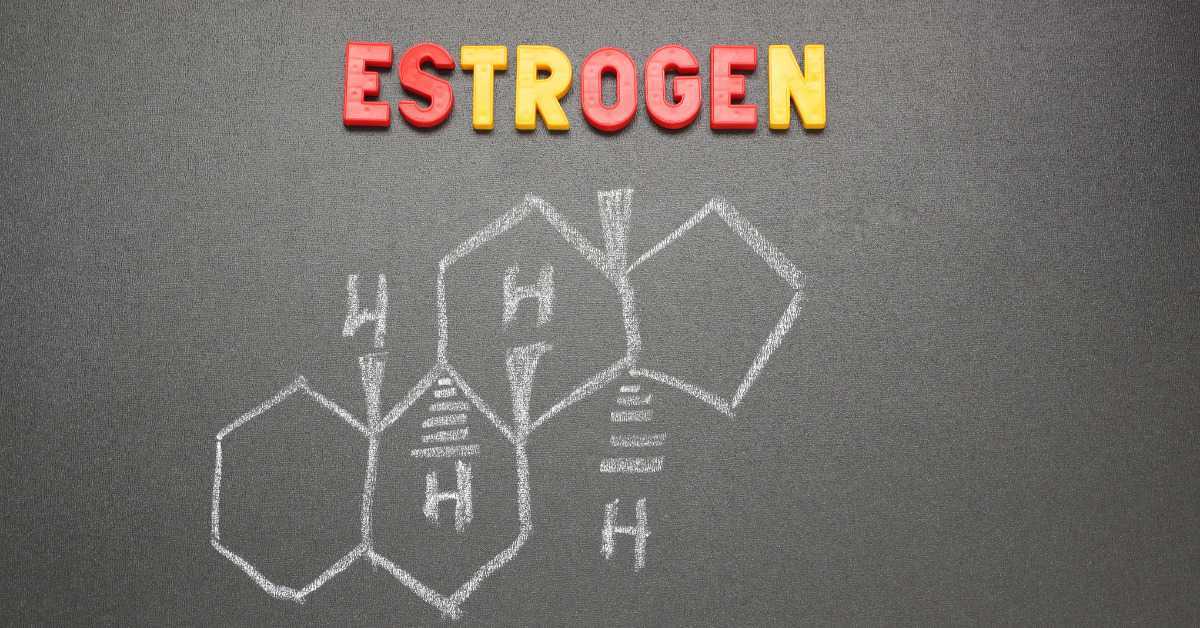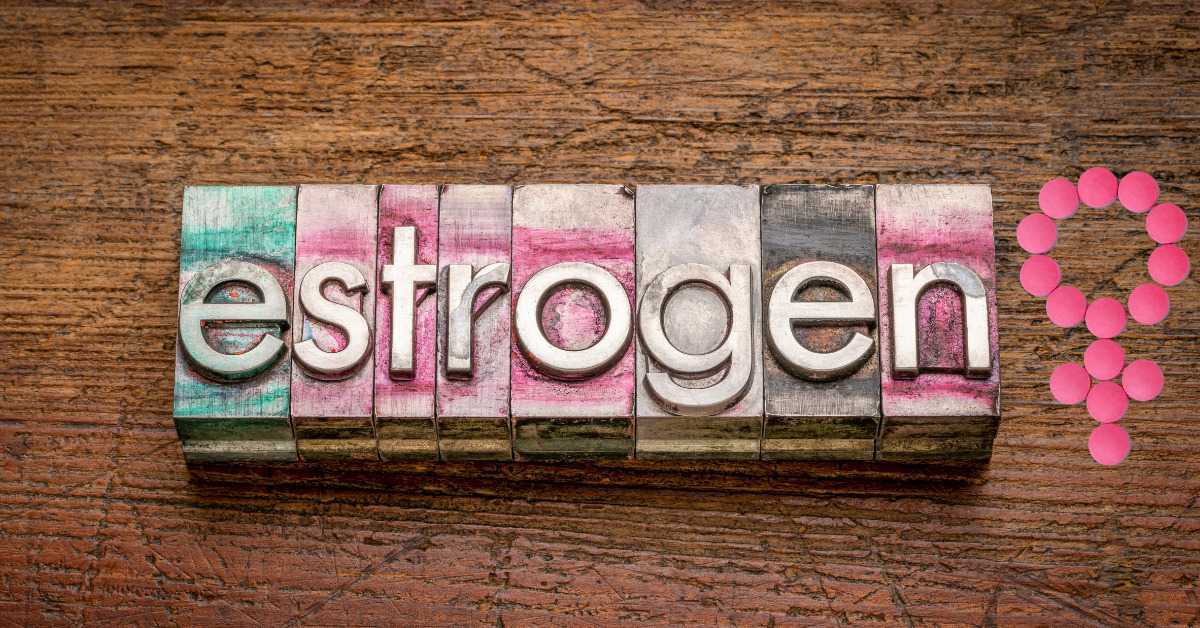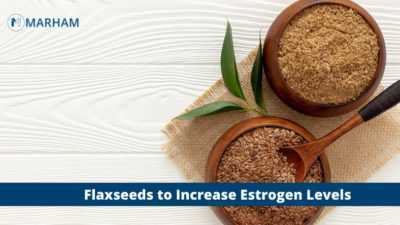With its light, nutty flavor and crisp, crispy consistency, flaxseed is a versatile ingredient that can enhance the taste and texture of any dish. In addition, it’s chock-full of nutrients and associated with a slew of advantages. One of the most excellent plant sources of omega-3 fats and a high source of phytoestrogen lignans.
The female reproductive system relies on human estrogen for development and control. But the question may arise: can you use flaxseeds in this way? If so, how do you eat flaxseeds to increase estrogen levels? Let’s have a detailed look at it.
What is Estrogen?


We all desire to stay active and healthy, but various things affect our health. One such thing is estrogen, a crucial hormone in the female body that governs the:
- Menstrual cycle
- Sexual drive
- Reproductive cycles.
What Is Low Estrogen?
Normal estrogen fluctuations are a wide range of highs and lows levels. Consistently low estrogen levels are something else. You may be going through a natural shift, like menopause. You may have a disease that delays your sexual development, making it more difficult for you to conceive.
Once a woman goes through menopause or stops menstruating, the amount of estrogen lowers. This can induce urinary tract infection, weakened bones, and even depression.
Women with low estrogen levels are at a higher risk of:
- Cardiovascular illnesses
- Osteoporosis
- Obesity
If you are suffering irregular periods, mood swings, hot flashes, or abrupt weight gain, it may be due to a reduction in the estrogen level in the body. One of the fundamental causes for the fall in estrogen levels in a woman’s body is aging.
Low Estrogen Symptoms
- Sensitive breast
- Dry skin
- Weak bones
- Difficulty in focusing
- Vaginal atrophy or dryness
- Irritable mood
- Night sweats and hot flushes.
- Headaches during or before periods
- Abnormal or no periods
- Increased weight, especially in the abdomen.
- Painful intercourse and decreased sex drive (dyspareunia).
- Tired and unable to fall asleep (insomnia).
You should consult The Best Gynecologist if you experience any of the above symptoms.
How to Increase Estrogen in Females?


There are many ways to increase the estrogen level in women. You can use:
- Particular food
- Vitamins
- Minerals
- Herbal supplements, etc.
Vitamins B and D are the best vitamins to increase estrogen levels. You can also use Flaxseeds to increase estrogen levels as it is a good source of vitamin B1.
How to Increase Estrogen Naturally?
Out of many natural ways, one of the popular approaches is to use flaxseeds to increase estrogen levels; let’s see why?
Role of Flaxseeds to Increase Estrogen Level
Lignans, an antioxidant found in flax seeds, are particularly potent. Lignans are, in fact, phytoestrogens, which are identical to estrogens. Phytoestrogens like those found in flax seeds are among the most abundant in nature. In addition, flaxseeds help:
- Improve cholesterol
- Regulate blood pressure
- Keep the weight under control
There is a strong relation between flaxseed estrogen and menopause. In postmenopausal women not on estrogen treatment, flaxseed may lessen hot flashes and enhance mood and quality of life.
There was just one research done on animals. According to a Trusted Source, a flaxseed-rich diet can lessen the severity and incidence of ovarian cancer in chickens. There is still a need for more human research.
There may arise queries, i.e., Does flaxseed increase estrogen in males? Well, no, it doesn’t. Or Does Flaxseed increase progesterone? Again no, it doesn’t have a prominent effect on progesterone.
How to Eat Flaxseeds to Increase Estrogen Levels?


You can add flaxseeds to increase estrogen into your daily routine in the following ways:
- When making a smoothie, add about 1-2 Tbsp ground flaxseed.
- Add flax seeds to your cereals or salads for a nutty flavor.
- Use a “flax egg” instead of eggs in your baking recipes (1 Tbsp ground flax in 4 Tbsp warm water)
All the above are excellent ways of using Flaxseed for estrogen replacement.
In addition to the role of flaxseeds to increase estrogen level, it also causes a decrease in estrogen level if it is in excess. It mainly acts as a hormone balancer.
How Does Flaxseed Balance Hormones?
The two primary ways that flax seeds assist in maintaining a healthy hormonal balance are:
In the first place, lignins in the gut bind to estrogen, guaranteeing that the estrogens are expelled in the stool. This interferes with the liver’s ability to reabsorb estrogen into the bloodstream. In this way, there is a decrease in total estrogen levels. Those who suffer from estrogen dominance will benefit significantly from this.
It has also been shown that lignans promote the liver’s synthesis of Sex Hormone Binding Globulin (SHBG). Estrogen binds more tightly to SHBG the more of it we have in our blood, increasing the likelihood of estrogen-dominance symptoms.
Flaxseed Cancer Warning


Flaxseed’s potential to function like that of estrogen can exacerbate hormone-sensitive disorders. Breast and ovarian cancer are among the illnesses that fall within this umbrella. If you have one of these conditions, you should be cautious while using flaxseeds to increase your estrogen level.
Now you have seen that even a natural product could be risky to consume too much. Only an expert can guide you properly on using such a thing for a particular result. But finding a skilled person could be difficult, and you cannot try every doctor in your region. Marham is your one-stop solution for such a problem. You can find the Best Doctor in your area and book an appointment now using Marham’s App.
FAQs
1. How much Flaxseed is ok for hormonal balance?
Two tablespoons of crushed flax seeds per day is a usual prescription for regulating hormones, although whole flax seeds may also be effective.
2. What seeds are good in addition to flaxseeds to increase estrogen levels?
Phytoestrogens are also present in the seeds of Sesame. Postmenopausal women who eat sesame seeds regularly have been found to have more estrogen activity.
3. Do women benefit from Flaxseed?
Flaxseeds help females ensure that the ovulation-to-menstruation interval remains within the typical range. Women’s fertility is also supported by it, as it increases the odds of conception. It also aids in the maintenance of a healthy hormonal balance.

